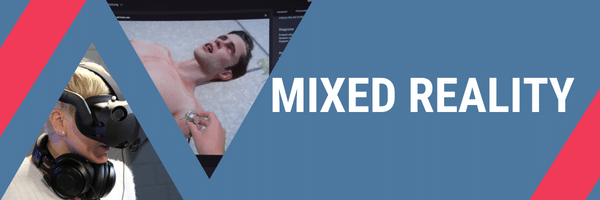In course of our social media campaign “18 days – 18 advantages of Mixed Reality Training” our 18 partners presented different aspects of the MED1stMR project and how they bring advantages to medical first responder training for mass casualty incidents.
If you missed the campaign or just want to have all advantages at one glance – here we go:
General advantages of
mixed reality training
Save on material & space
Once the training system is installed, it’s easy to start training with just one click and adapt it for each training. This results in enormous savings regarding material and space in the organisation of practical training for medical first responders.
Flexibility & Automated After-Action Review
Medical first responder training in a mixed reality environment offers flexibility regarding the scenario, the place where you train, and the option to stop and resume anytime. All actions are automatically recorded and video material doesn’t need to be analysed manually.
Realism
Being able to train in environments that typically cannot be closed down for real-life training or are too far away from the trainees, helps to raise the realism of medical first responder simulation training in mixed reality.
Train the impossible
Including vulnerable groups (children, elderly etc.) in a mass casualty incident scenario offers valuable options that cannot be trained easily in real-life.
Mixed Reality instead of Virtual Reality only
Haptic experience, or the sense of touch, through medical tools or a simulation manikin, is an important aspect of mixed reality (MR) as it allows users to physically interact with virtual objects. This raises realism and creates a better learning effect.
Save on role-players and replace post-it based injuries
Providing realistic injuries in the virtual environment and also reactions of the patients to the treatment without the need to prepare hundreds of volunteering role-players offers huge saving potential for training.
Safe training environment
The virtual simulation of dangerous mass-casualty incidents (disaster situations, train or bus crash etc.) allows first responder trainees to practice procedures and techniques in a safe and controlled setting.
Infinite assets
Selecting from hundreds of realistic assets regarding role players, environments, wounds and the development of injuries during treatment is a game-changer for medical first responder simulation training.
User Experience
MED1stMR specific advantages
High Immersion
By incorporating haptic equipment, such as devices that provide tactile feedback, trainees can interact with physical objects, enhancing their sense of immersion and promoting direct learning effects
Simulation Manikins
The integration of high-fidelity patient simulator manikins into a virtual world offers additional virtualised simulation options and provides an ideal addition to current skill training with simulation manikins in the real world.
Measuring the trainees’ biosignals
The measurement and subsequent visualisation of real-life biosignal data in a trainer dashboard is an enormous advantage of digitalised training. All data are prepared in one place for more conscious and data-driven training decisions.
Full-service approach
Providing training guidelines and didactical concepts for mixed reality training of mass casualty incidents as well as inputs for policy- and decision makers represents the end-user-oriented approach of MED1stMR.
Stress as a relevant factor in training
A better understanding of how stress influences the decisions and actions of medical first responders in mass casualty incidents and a smart adaption of the training to such demanding situations enhances the effectiveness of the scarce training sessions enormously.
Group-approach
Training multiple users at the same time in the same situation offers insights into group dynamics and more realistic preparation for real-life situations.
Data Visualisation & Behavioural Feedback Loop
Combining different data to a physiological and trainee behaviour feedback loop that enables a smart assessment of the trainees’ stress level and performance during mixed reality training brings enormous additional insight for evidence-based feedback.
Preparation for large-scale real-life training
Especially less experienced trainees can be better prepared for real-life training sessions by exposing them to stressful and dangerous situations in the virtual world. The combination of virtual underground reality with haptic objects will improve the subsurface performance of medical first responders while maintaining their resilience
End-user Involvement
MED1stMR follows a multidisciplinary agile and end user-centered approach that combines the needs of more than 7 different end-user organisations and practitioners with high-end technology and beyond state-of-the-art research. This way, we create a novel training solution for improved performance of medical first responders in emergencies.

